Thanks for stopping to see what's going on @ Prowler Aviation. I don't have a lot to report this update, but a few goods things are happening and I am trying to keep my promise to update more often. So, in this update:
1. Ray has started his Prowler
2. Bryan's Build Update
3. Building More Retaining Wall(s)
4. Start on the Low Pressure High Volume Hydraulic Pump
5. Getting Materials & Tools For Tip Ribs
6. Also Looking Ahead To Spar Completion
1. Ray has started his Prowler - Ray started his airplane for the first time on Oct 13th. He reports having to sort through some issues, but the engine is running fairly good. Here is a video he sent me:
The biggest bug of the engine runs is the fussy fuel control. The system seems to be very sensitive to throttle changes and the mixture has to be adjusted constantly for every throttle movement to keep the engine running. Ray has contacted the fuel injection manufacturer and is now working with a representative to get the system set up correctly. The first issue is to add a fuel-flow meter system to the airplane. Apparently, in order to properly map the fuel to air, the system has to have a fairly accurate fuel-flow indication.
After the engine runs, as not unexpected, he found a few small leaks that have been corrected. He also found that the prop was not completely snug down to the prop flange on the reduction gear cause by a slightly over-sized o-ring. So, that will be corrected when the prop gets removed soon for other work that will need to be done.
Congratulations Ray!!! That is a major milestone in your project. You are going to have one awesome (running / flying) aircraft soon!
2. Bryan's Build Update - Just a quick update from Bryan. The hydraulic pump that Bryan and I were having a problem bleeding has been returned to the manufacturer. They are still working on the pump/motor. in the meanwhile, Bryan has installed the roll bar (AKA the windscreen frame). Here's a pic:
Great work Bryan!
3. Building More Retaining Wall(s) - Since building my shop, I've been ignoring a problem with the steep bank that was cut into the hill where the building pad was cut. Here's a composite pic of what it looked like after the pad was cut and before the slab was poured:
If you click on the pic, you will see the bank in the back left corner that was created when the building pad was cut into the hill. After the shop was built, there was about 36" of space between the back wall of the shop and the base of the bank. Below is a pic of what the area behind the shop looked like when I was installing the drain pipe and gravel (as I built the shop). But, over the past 6 years, the weather has caused the bank to erode down and build up against the back of the shop. This spring, the mud had finally built up until it was touching (actually above the bottom of) the siding. So, it's time to fix the problem and build a retaining wall:
Here is what the same area looked like recently after I pulled the drain pipe back out, cleaned out the gravel and mud, then started to cut into the bank more to provide space for a poured concrete wall:
Here's part of the first 20 feet of the 1st tier of the wall after forming. I'm actually using the same form boards that I used to form the slab for the shop. I doubled them up one on top of another and then scabbed them together to make an 18" high form section that is 16ft long:
The first pour was 20 feet total, 10 feet on the south wall and 10 feet on the west wall. Here's the 10 feet of west wall (looking south) - notice the 2"x8" dam to stop the pour @ 10ft from the corner:
As you can tell, this was the end of a long day. I just got this first 20 feet in the corner mixed and poured before sunset. Here's the 10 feet of south wall (looking west):
Because this is such a long wall, and it's such a tight area to get into - I've been using my concrete mixer and just buying bags of sack-crete to build the wall. I would spend too much for forming materials to try to form the entire wall up at one time and then get premixed concrete trucked in. Plus, I'd have to get a concrete pump truck that would be more costly than the concrete itself. So, I've elected to just do it myself, on the cheap. Here's the mixing station with a pallet of covered concrete bags:
Here's the second 20feet of wall completed:
Here is the 3rd section of the wall poured and forms removed:
The end of this wall will also get an angled section attached to it that is similar to the section in the picture below. And, here's is that other angled 10ft section of wall on the south end of the shop that is formed and ready to pour:
After this section and the other angled 10 ft section are poured, I will have the first tier completed. Then next order of business will be getting (finally) rain gutters on roof in the back of the shop. After that, I'm going to pour a thin sidewalk behind the shop in the area between the shop foundation and the bottom of the newly completed wall. That area gets just soupy and muddy in the rainy winters and grows weeds in the spring/summer - so I'm going to form it up and pour a thin sidewalk back there to keep things neat and clean.
In addition to all of this work, I also got 4 loads of fill dropped off to help expand my shop driveway on the north side of the shop. This fill will settle over the wet winter time and provide a more permanent place to park the RV next summer (and beyond). It will also provide back-fill for the "Great Wall of Prowler" as I continue to work on it (probably next spring). Here's a pic. You can see the partially complete north end of the great wall in the lower right hand corner:
Here's a pic of the same area from below - you can see the need for the wall from this view:
As you can probably tell, these retaining wall projects have been taking a lot of my time (and money) lately. So, I haven't gotten a lot done with the airplane or the company. But, it is on my mind. While I'm mixing concrete and I am using the time help solve some problems with wing spar and hydraulics that are coming up. Then I use the down time (while I'm resting my aching back) to locate and order parts or pick up supplies, etc.
4. Start on the Low Pressure High Volume Hydraulic Pump - I have been taking the opportunity [while NOT working on retaining wall(s)] to look for and buy parts for the hydraulic system I need to assemble for the pseudo-hydro forming press. I was searching for a Low Pressure/High Volume (LP/HV) pump solution to add to the existing system. I looked into electric motor driven systems, but they are usually expensive and designed to run full time. I don't need that for this application. I looked at 12Vdc hydraulic units used on dump trailers, etc. But, they don't come up on eBay or Craigslist often - unless they're worn out or broken. Also, they are not real high volume and new, they want $300-400 for the units. Then, I came across an eBay add for a manual pump made from a Parker hydraulic double acting ram. I liked that this idea was simple, fairly fast, and not too expensive ($50). Here's a picture of the pump as it was in the auction ad:
This is what the same pump looks like stripped apart on the workbench:
I needed to take it apart to check that the seals were good, and to confirm that I can use it as a double acting pump. It turns out that I can do it, but I will have to machine a few more ports into the cylinder end caps similar to the 90deg one that you see on the right side of the free end cap (closest to the black handle grip). This piston has a 1" bore and a 2" stroke. So, it will move 4 cu.in. of hydraulic fluid in one (double acting) stroke. Doing the math on the ram, it will take about 12-15 strokes to move the ram into crushing position (approx. 2-1/2" inches up). To me, that seems reasonable, reliable and controllable. Here is the overall schematic that I am planning for the hydraulics system for the press:
This system will provide me with a quick way to get the ram moved up into position using a manual hydraulic pump. Once I use the manual pump to get the ram and the lower press box into position, both the LP Isolation valves (both are 10,000psi valves) are closed. Once both of those valves are closed, I will use the 10,000psi HP (air over hydraulics) pump to do the actual metal forming (rib smashing). This design will also require 4 check valves to sequence the movement of hydraulic fluid from the reservoir to the ram. If you look at the diagram you can see that as the handle of the pump moves one direction, one of the inlet check valves is opening to let fluid into one side of the piston and the outlet check valve is open on the other side of the piston to allow the fluid to move toward the piston. (BTW - the single acting version of this is EXACTLY the same as what you have in any hydraulic bottle jack. The only difference is that the check valves are integral into the base of the jack where you can't see them - but they're there!).
Here's how I envision the final system will work:
1. Place die, blank, and rubber in the press box.
2. Ensure LP Return Valve is closed.
3. Ensure LP Supply Valve is open.
4. Use manual LP/HV pump until rubber partially smashed.
5. Close the LP Supply valve.
6. Mark position of press box (vertical height).
7. Step on the HP/LV air-over-hydraulics pump and press part.
8. Step on the HP/LV pump pressure release and lower press box.
9. Stop at same place marked in step 6.
10. Open LP Return valve and lower press box to bottom.
11. Remove rubber, part & die.
Here are the the 10,000psi isolation valves I and a short hydraulic hose that I bought so far:
The only parts I still need to finish the system are the 4 check valves, a few 1/4" hoses, and various hydraulic fittings (reducers, 90 deg elbows, etc.). Oh yeah, I will also need to either fabricate a new 5-port manifold or expand off of one of the 3 ports on the 3-port manifold that I have already made. Not sure which way I will go on that one yet. More to think about while I'm mixing concrete.
5. Tip Ribs - Getting Materials & Tools Lined Up - I have also been using the time while I'm building retaining walls to gather up some tools and materials for getting the tip ribs made this winter. Here is some of the planning data, in no particular order:
1. I've decided to start making my dies from aluminum (at least for the time being). Every part that will need to be formed from a die will have to be made using this process and will have to have a new die made from AL. I haven't even tried to count them all yet - I'm afraid to.
2. I have all of the CAD drawings of all of the parts to be formed completed already and the profiles can be CAM'ed and sent to the Ganesh CNC mill fairly readily.
3. The flanges on the blank (as they are being formed) cannot hit the bottom of the press box, so the aluminum plate that the die is fabricated from has to be a min of 1" thick. The dies must also be made individually for each part and the same die CANNOT be used for the opposite handed part (in other words, the LH die cannot be used to make the RH parts, and vice-versa.) This is due to two reasons:
3.A. The sides of the dies have to have a rather large radius on the top edge to prevent the blank from cracking during forming, and:
3.B. The sides of the dies have to be undercut by 9-10 degrees to allow for spring back during forming. Here's a pic of what that will look like:
4. The dies will have to be made using the CNC Knee Mill - in 3 separate steps:
4.A. Cut the die profile (what you see looking from the top down). Here is a sample of the tip rib CAD drawing that I recently re-designed and will use to cut the tip rib dies. The top profile in the pic below will be the one used to fabricate the basic shape of the tip rib die. Looks like I will need aluminum plate that is at least 25" long and 3.5" high:
You may recall that I have decided to re-design the outboard tip rib to work in the new press. This new truncated design prevents the thin trailing edge from causing problems in the pressing process and make the tip rib fit lengthwise into the press box.
4.B. Cut the 1/8" to 3/16" radius in the top edge of the die (using the same profile). This can be done using standard off-the-shelf radius end mills.
4.C. Cut the "under cut" to allow the flanges to be "over-bent" to allow for spring-back. Here is the tool that I had specially made by a local tool-and-die maker ($125):
Here is what it will (sort-of) look like when this tool will be used to "under cut" the profile on the die:
5. I found a place in Sacramento that sells surplus odds-n-ends pieces of aluminum plate. Here are several pieces that I got recently in preparation for cutting some of these dies. You might be able to see a black dashed line on the right side of the old tip rib pattern. That is the approximate length that the new tip rib die will be:
6. Also Looking Ahead To Spar Completion - Once I have the spar installed into the jig, I will have to take it back out to do the corrosion proofing (chromate conversion process - AKA "Alodine"). You may recall from a previous post this early this year that I spent quite a while researching the chromate conversion process [(see it here) Item 3. - almost to the end of the post].
Here are the parts of chromate conversion puzzle (readers digest version):
1. You have to have an etchant to clean the aluminum thoroughly before applying the chromic acid (Alodine, Iridite, etc.). In the link above I learned that this etchant can be made from 1/3 phosphoric acid (75%), 1/3 ethylene glycol, and 1/3 water. This makes a 30% etchant solution that can then be diluted further, as needed, to clean the aluminum parts. So far, I've found and purchased the phosphoric acid from Sierra Chemical Supply in Sacramento:
The chemical supply place didn't have the ethylene glycol in stock when I got the acid. They reordered it and called a few days later to tell me that it is now in stock, so I'm looking for an opportunity to pick that up on a future trip to Sacramento.
2. You need to have the chromic acid. Here is the 10lbs pail of Iridite that I got from a chemical supply place in the LA area. I ended up driving it home on a family trip - shipping is complicated because it is a hazmat (oxidizing) substance. This dry powder gets mixed with water and each pound of dry Iridite makes 5-6 gallons of chromic acid for the chromate conversion (AKA "alodining").
3. You need to have 2 big tanks to do the chromate conversion process to your parts. The best thing to make the tanks out of would be PVC. But, having specially made tanks big enough for the wing spar parts would be fairly expensive. I'm planning on making two tanks from 2"x 4" lumber for the sides and a 2"x12" plank bottom. Then this will be lined with a layer of felt and then double layers of 6-8 mil poly sheet. Here's my initial idea:
All this material is readily available from Lowe's or Home Depot. The biggest parts of the spar to put in the tanks are the center section main spar shear web and the outboard wing spar channels. The main center section spar shear web is essentially 96"x10". The outboard spar channels are 85.5"x 6.5"x 2.5". So, a tank that is 100"L x 11"W x 2"D should suffice. Doing some quick math, filling the tank above (assuming a 100" length) to a depth of 1" will take 5 gallons. The outboard spar channel will have to be done one side at a time and rolled over. The rest of the parts are all flat and can be submerged in 1" of fluid.
4. When you have all this mixed and set-up the process goes like this. Dip a part in the etchant and let it sit until it is dull in appearance and when lifted out of the water the etchant runs clean off and doesn't "stick" anywhere on the part. If it sticks, it goes back into the etchant for a while longer. Once it's clean, the part comes out of the etchant and then gets thoroughly rinsed with water. As, soon as it is rinsed it it placed into the chromic acid tank and soaked until the surface gets a yellowish to brownish appearance. Then the part is removed, rinsed again with water and hanged to dry. Repeat for all the parts. There are lots of YouTube videos to watch on how to do this.
That's all for this update. Thanks for stopping by again to check on the progress here at Prowler Aviation.
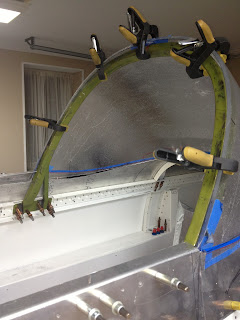
























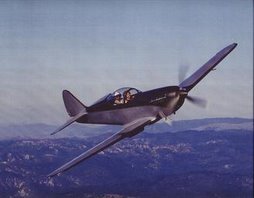
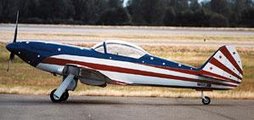
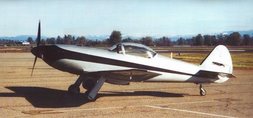
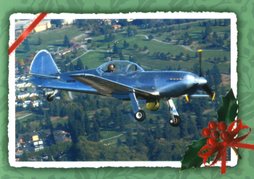
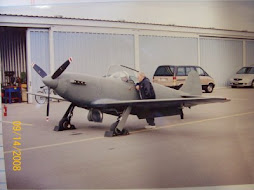
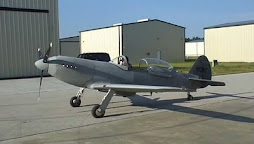

No comments:
Post a Comment